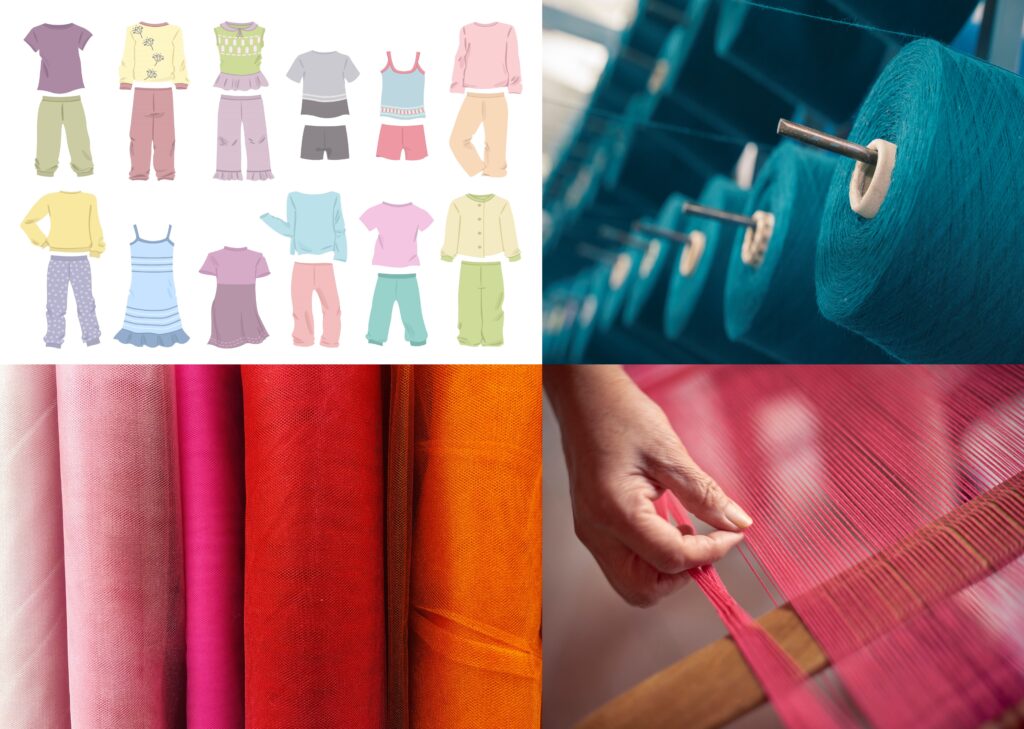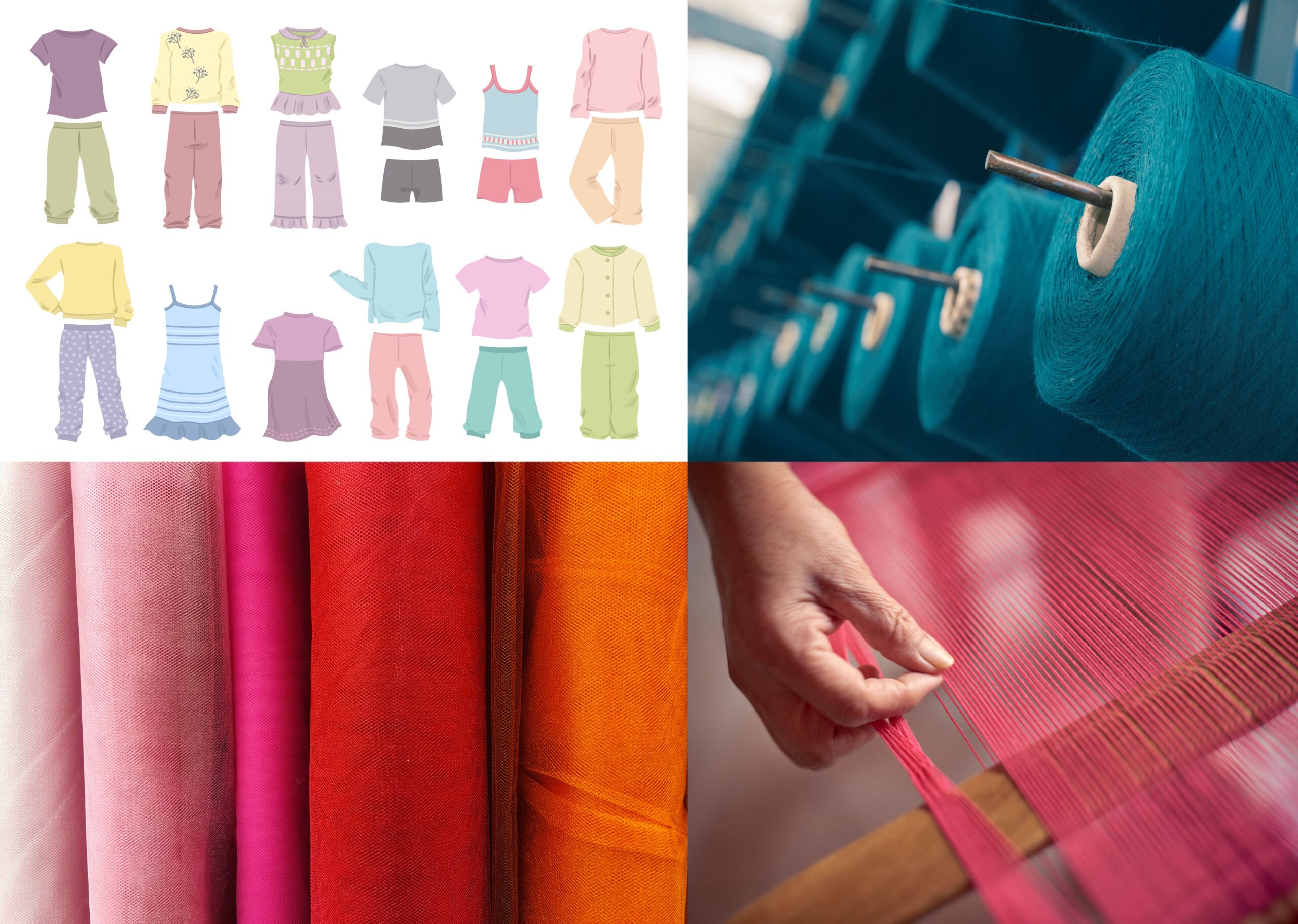Table of Contents

Introduction
High-performance textiles are driving a groundbreaking revolution in the textile industry. With rapid advancements in nanotechnology, smart materials, and biochemistry, these textiles are redefining what clothing can do and how it interacts with us. Gone are the days when garments were merely items of fashion or protection against the elements. Today, apparel has evolved to serve a multitude of functions, incorporating self-cleaning, antimicrobial properties, and temperature regulation to enhance comfort, durability, and hygiene.
High-performance textiles offer powerful solutions to everyday challenges, making them ideal for health-conscious consumers, athletes, and those in harsh working environments. This article delves into the science behind these innovative textiles, exploring how self-cleaning, antimicrobial, and temperature-regulating features work and their significant impact on consumer markets and environmental sustainability. Additionally, we look ahead to future innovations as researchers continue to push the boundaries of textile technology.
Self-Cleaning Textiles: The Science and Applications
Self-cleaning textiles represent a leap forward in garment care, minimizing the need for washing and extending the life of clothing. At the core of these textiles are advanced materials that repel dirt, water, and other contaminants.
How Do Self-Cleaning Textiles Work?
Self-cleaning textiles leverage two primary mechanisms:
- Hydrophobicity (Water-Repelling Properties): Some textiles are treated with hydrophobic coatings that prevent water and stains from adhering to the fabric. This approach is inspired by the lotus leaf, which repels water due to its micro-structured surface. Recent advances include the development of water-repellent nanocoatings made from materials like silica or titanium dioxide nanoparticles.
- Photocatalytic Activity: This involves using materials that react to sunlight to break down dirt and organic matter. Titanium dioxide nanoparticles, for example, can generate reactive oxygen species when exposed to UV light, breaking down organic contaminants into harmless compounds. This photocatalytic effect also imparts antimicrobial properties, adding an extra layer of functionality.
Applications of Self-Cleaning Textiles
Self-cleaning textiles have numerous applications in sectors such as healthcare, sportswear, and military uniforms. Some common uses include:
- Outdoor and Sports Apparel: Clothes that repel mud and dirt are ideal for outdoor sports, making them easier to maintain.
- Healthcare Textiles: Hospital gowns, bed linens, and other medical textiles benefit from reduced washing, limiting the spread of infection.
- Everyday Wear: Self-cleaning garments could significantly reduce water and detergent usage, benefiting the environment.
Antimicrobial Textiles: Fighting Pathogens in Everyday Wear
With increasing awareness of hygiene and the spread of diseases, antimicrobial textiles have grown in popularity. These textiles are engineered to prevent the growth of bacteria, fungi, and even viruses, making them especially valuable in environments requiring high hygiene standards with pathogen free materials.
Mechanisms of Antimicrobial Textiles
Antimicrobial textiles incorporate materials that inhibit or kill microorganisms on contact. Common methods include:
- Silver Nanoparticles: Silver ions have been widely used due to their antimicrobial properties, which inhibit bacterial reproduction and disrupt cellular functions.
- Copper and Zinc Ions: Like silver, copper and zinc ions are toxic to microorganisms. Copper-infused fabrics are now widely used in medical and sports applications.
- Bio-based Antimicrobials: Researchers are developing natural antimicrobial agents derived from plants and microorganisms. Chitosan, derived from crustacean shells, exhibits strong antibacterial and antifungal properties and is biodegradable.
Applications of Antimicrobial Textiles
Antimicrobial fabrics have widespread applications:
- Medical Fabrics: Hospital uniforms, beddings, and scrubs require antimicrobial properties to reduce infection risks.
- Athletic Wear: Antimicrobial fabrics help reduce odor and prevent bacterial growth due to sweat.
- Home Textiles: Towels, bedsheets, and kitchen fabrics with antimicrobial properties maintain cleanliness and hygiene.
Temperature-Regulating Fabrics: Adapting to Changing Conditions
Temperature-regulating textiles are another breakthrough in high-performance apparel. By adapting to fluctuations in body and environmental temperatures, these fabrics provide comfort in a range of conditions.
How Temperature-Regulating Textiles Work
These textiles employ materials and technologies that enable heat management:
- Phase-Change Materials (PCMs): PCMs absorb or release heat during phase transitions. For instance, paraffin wax capsules embedded in fabrics melt as they absorb heat and solidify when they release it. This process allows the textile to maintain a stable temperature.
- Thermo-responsive Polymers: These materials alter their structure based on temperature, changing the garment’s heat retention. By expanding or contracting, they allow heat dissipation or insulation as needed.
- Conductive Fibers: Integrating conductive materials like graphene or carbon nanotubes enables the transfer of heat across the fabric, enhancing warmth or cooling as required.
Applications of Temperature-Regulating Textiles
Temperature-regulating fabrics find applications in multiple areas:
- Outdoor and Athletic Gear: Clothing that regulates temperature provides comfort for outdoor athletes exposed to varying temperatures.
- Sleepwear: Temperature-regulating sleepwear can improve sleep quality by maintaining a stable microclimate.
- Workwear: For workers in extreme environments, temperature-regulating fabrics enhance safety and comfort.
Challenges and Sustainability of High-Performance Textiles
While high-performance textiles offer immense benefits, they also face challenges, particularly in sustainability. Concerns arise over the environmental impact of certain chemicals and nanoparticles, production costs, and the need for long-term durability.
Environmental Impact
Many of these textiles rely on synthetic materials and chemical coatings, which can raise environmental concerns. The production and disposal of synthetic fibers are known to contribute to microplastic pollution, posing risks to marine ecosystems and human health.
Cost and Durability
Advanced textile technologies often involve complex and costly production processes. Nanomaterials like silver, titanium dioxide, and graphene are effective but can add significantly to the cost of fabric. Another consideration is the durability of these treatments over multiple washes and prolonged use, which can impact their long-term sustainability.
Advancing Sustainable Solutions
As the demand for high-performance textiles grows, researchers are increasingly focusing on sustainable alternatives to meet environmental challenges and consumer preferences:
Biodegradable Coatings: New innovations include biodegradable antimicrobial agents derived from natural sources, such as chitosan from shellfish shells, which help textiles resist bacteria without releasing harmful chemicals. Researchers are also exploring plant-based coatings that naturally break down after use, reducing long-term environmental impact.
Recyclable Textiles: Developing methods to recycle high-performance textiles without losing their unique properties is a key area of focus. Advances in fiber separation and purification techniques make it possible to reuse materials while preserving qualities like durability, antimicrobial action, and thermal regulation. Closed-loop recycling systems are also being explored to limit waste and maximize resource efficiency.
Eco-Friendly Manufacturing: Sustainable manufacturing practices are crucial in reducing the environmental footprint of textile production. Water-based and solvent-free processes help minimize chemical pollution, while energy-efficient techniques like low-temperature curing and ultrasonic treatment reduce overall resource consumption. Some companies are also investing in green energy sources, like solar or wind, to further offset the carbon footprint of textile production.
Natural Dyes and Finishes: Replacing synthetic dyes with natural alternatives derived from plants, minerals, and bio-waste cuts down on toxic runoff and water usage in the dyeing process. Low-impact finishing techniques, such as ozone treatments, also reduce the need for harsh chemicals, offering an environmentally-friendly approach to achieving the desired textile properties.
Waste Reduction in Production: Advanced cutting and weaving technologies are being adopted to minimize fabric waste, often achieving near-zero waste levels. By implementing precision design tools, manufacturers can produce textiles with optimized material usage, contributing to sustainability while lowering production costs.
Together, these innovations are reshaping the high-performance textile industry, providing sustainable solutions that balance advanced functionality with environmental responsibility.
The Future of High-Performance Textiles
The future of high-performance textiles is filled with possibilities as new materials and technologies emerge. As researchers continue to innovate, we can expect further developments in wearable technology, smart textiles, and bioengineered fabrics.
Key Trends and Future Directions
- Smart Textiles: Fabrics that integrate sensors to monitor vital signs or environmental conditions are gaining attention. These smart textiles could revolutionize healthcare, athletics, and military applications.
- Bioengineered Materials: Advances in biotechnology may lead to textiles that grow from bacteria or algae, offering biodegradable alternatives with minimal environmental impact.
- 3D-Printed Fabrics: With 3D printing, customized high-performance textiles could be created, reducing waste and allowing for novel designs and functionality.
High-performance textiles represent a critical frontier in apparel technology, bringing functional, sustainable, and stylish options that benefit consumers and the planet alike.
Conclusion
High-performance textiles are reshaping the landscape of apparel, with fabrics that go beyond traditional expectations to deliver a new level of functionality. Through self-cleaning, antimicrobial, and temperature-regulating features, these textiles offer promising solutions to improve everyday life, providing enhanced comfort, hygiene, and durability. As the textile industry continues to innovate, the potential for creating sustainable, smart, and responsive fabrics grows, marking an exciting era in fashion and functional apparel. While challenges remain, especially concerning sustainability, high-performance textiles offer a compelling vision of the future where clothing not only complements our style but also supports our health and the environment.
With the development of textiles that minimize water usage, repel pathogens, and adjust to individual body temperatures, these innovations can significantly reduce our ecological footprint. Self-cleaning textiles, for example, help cut down on laundry-related water and energy consumption, offering real benefits for resource conservation. Additionally, antimicrobial fabrics support health and well-being, particularly in high-contact environments like hospitals, gyms, and public spaces. As researchers continue to address the environmental and cost challenges associated with these technologies, high-performance textiles could soon become accessible mainstream solutions, transforming how we think about, wear, and care for our clothing on a global scale.
Frequently Asked Questions (FAQs)
Q1: What are high-performance textiles?
High-performance textiles are fabrics engineered with advanced properties like self-cleaning, antimicrobial, or temperature regulation.
Q2: How do self-cleaning textiles work?
Self-cleaning textiles often use nanotechnology or hydrophobic coatings to repel dirt and break down stains under sunlight.
Q3: Why are antimicrobial textiles beneficial?
Antimicrobial textiles reduce bacterial growth, improving hygiene and odor resistance in clothing.
Q4: What are temperature-regulating fabrics?
These fabrics use phase-change materials or thermoresponsive fibers to manage body temperature for comfort.
Q5: Are high-performance textiles environmentally sustainable?
Some are sustainable, especially if they use eco-friendly coatings, but others can contribute to pollution without proper disposal methods.
References
https://www.sciencedirect.com/science/article/pii/S2468023020308828
https://www.mdpi.com/2073-4344/11/8/952
https://pmc.ncbi.nlm.nih.gov/articles/PMC8275915
https://www.mdpi.com/1420-3049/26/10/3008
https://www.mdpi.com/2673-7248/3/2/15
https://www.mdpi.com/1996-1944/17/2/383
https://www.mdpi.com/2079-4991/13/17/2406
https://www.mdpi.com/2076-3417/14/6/2473
https://www.mdpi.com/1996-1073/17/10/2292
https://www.mdpi.com/2076-3417/13/18/10489
https://www.mdpi.com/2073-4360/15/20/4065
https://www.mdpi.com/2079-4991/13/3/516
YouTube Linkhttps://youtube.com/shorts/QHSlcsUx8uM

